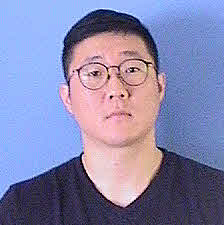Resident Supervision
The Residency Supervision Area is designed to assist hospitals and clinics with the protocols outlined for specific duties residents and fellows can perform. These guidelines are determined by the faculty of the University of Tennessee Health Science Center. Any questions about certain procedures not listed should be addressed to the faculty and not decided by the resident or fellow.
A credentialed and privileged attending physician ultimately provides supervision or oversight of each resident's patient care activities. Direct supervision by a qualified attending physician is required in the OR/Delivery Room or for non-routine invasive procedures like Cardiac Cath, Endoscopy, and Interventional Radiology. The standards for resident supervision in patient care settings are described in GME Policy #410.

Yun, Ho Jun - PGY - 2
Department of Neurosurgery
Resident Supervision
The following chart shows when a Neurosurgery resident is approved to safely and effectively perform certain procedures or clinical activities without direct supervision:
|
Neurosurgery Residency Program |
PGY1 |
PGY2 |
PGY3 |
PGY4 |
PGY5 |
PGY6 |
PGY7 |
|
Cranial: |
|
|
|
|
|
|
|
|
Cranial: Tumor General |
|
|
|
X |
X |
X |
X |
|
Cranial: Tumor Sellar/Parasellar |
|
|
|
X |
X |
X |
X |
|
Cranial: Trauma/Other |
|
|
|
X |
X |
X |
X |
|
Cranial: Vascular Open |
|
|
|
|
X |
X |
X |
|
Cranial: Vascular Endovascular* |
|
|
|
|
|
|
|
|
Cranial: CSF Diversion/ETV/Other |
|
|
|
X |
X |
X |
X |
|
Cranial/Extracranial: Pain |
|
|
|
X |
X |
X |
X |
|
Cranial/Extracranial: Functional Disorder* |
|
|
|
|
|
|
|
|
Cranial/Extracranial: Epilepsy |
|
|
|
X |
X |
X |
X |
|
Spinal: |
|
|
|
|
|
|
|
|
Spinal: Anterior Cervical |
|
|
|
X |
X |
X |
X |
|
Spinal: Posterior Cervical |
|
|
|
X |
X |
X |
X |
|
Spinal: Thoracic / Lumbar / Sacral / Instrumentation / Fusion |
|
|
|
X |
X |
X |
X |
|
Spinal: Lumbar Laminectomy / Laminotomy |
|
|
|
X |
X |
X |
X |
|
Spinal: Stimulation / Lesion / Pump / Other |
|
|
|
X |
X |
X |
X |
|
Peripheral Nerve: |
|
|
|
X |
X |
X |
X |
|
Radiosurgery: |
Completion of >10 total radiosurgery cases, regardless of type |
||||||
|
Peripheral Device Management: |
|
|
X |
X |
X |
X |
X |
|
Critical Care**: |
|
|
|
|
|
|
|
|
Airway Management |
|
X |
X |
X |
X |
X |
X |
|
Angiography* |
|
|
|
|
|
|
|
|
Arterial Line Placement |
|
X |
X |
X |
X |
X |
X |
|
CVP Line Placement |
|
X |
X |
X |
X |
X |
X |
|
EVD/Transdural Monitor Placement |
|
X |
X |
X |
X |
X |
X |
|
Lumbar/Other Puncture/Drain Placement |
|
X |
X |
X |
X |
X |
X |
|
Percutaneous Tap of CSF Reservoir |
|
X |
X |
X |
X |
X |
X |
|
Pediatric: |
|
|
|
|
|
|
|
|
Pediatric: Cranial Tumor* |
|
|
|
|
|
|
|
|
Pediatric: Cranial Trauma/Other |
|
|
|
X |
X |
X |
X |
|
Pediatric: CSF Diversion/ETV/Other |
|
|
|
X |
X |
X |
X |
|
Pediatric: Spinal |
|
|
|
X |
X |
X |
X |
|
All other procedures are performed under direct supervision of a faculty member.
*Residents of all levels must be directly supervised for these procedures. **Critical care procedures (with the exception of angiography) can be performed independently following completion of the critical care rotation during the PGY1 year. Timing of when the rotation occurs will vary among residents. |
|||||||
